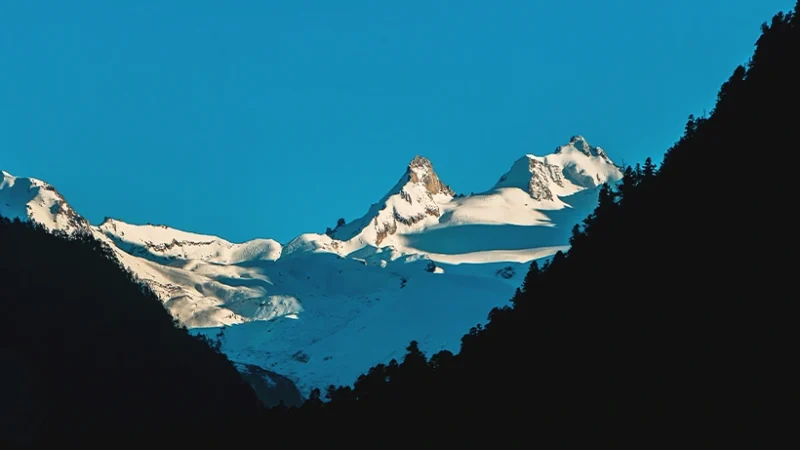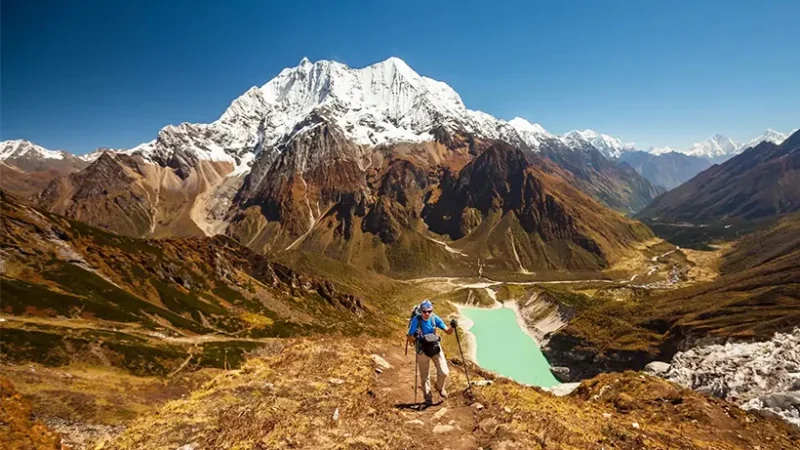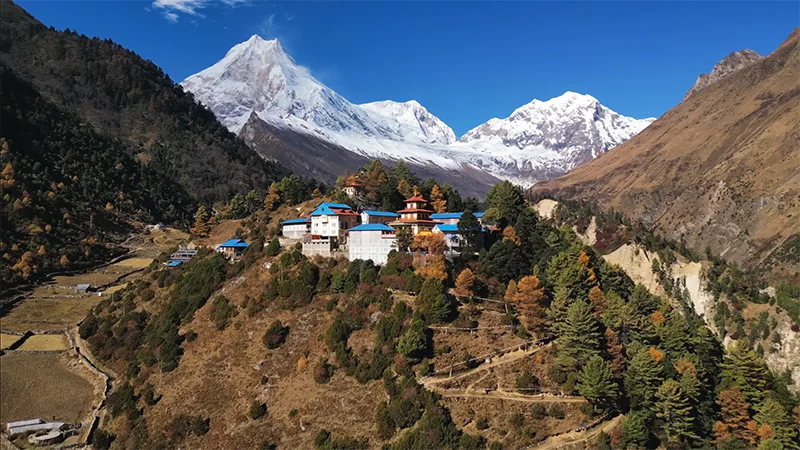Overview
Only in 1991 was the Manaslu region formally opened to foreign tourists. A beautiful trip will take you around Mt. Manaslu, the world’s eighth-highest peak. With breathtaking views of the Manaslu region that must be experienced in their entirety. The Manaslu region provides an experience, unlike any other hike.
This peak was successfully climbed for the first time in mountaineering history on May 9, 1956. Toshio Imanishi and Gyalzen Norbu lead this Japanese mountaineering group. Kato and Higeta followed them to the summit two days later.
In local terms, Manaslu means “mindfulness.” These Manaslu routes each have their own particular qualities, ensuring that you get the recreation you want. Spend time and experience the Manaslu region to immerse yourself in the gorgeous national park, geography, and culture.
Highlights of the Manaslu Region
- Mt. Manaslu (8,156m), is the eighth-highest mountain in the world.
- Few trekkers, making your visit here more exclusive and unspoiled.
- Geographically spectacular and culturally fascinating, well-known for the combination of rich cultural heritage, genuine adventure, incomparable beauty, and biological diversity.
- Manaslu Conservation Area is the home of endangered animals and different varieties of bird species.
The Himalayas of the Manaslu Region
- Mt. Manaslu (8,163 m)
- Himal Chuli (7,893 m)
- Ngadi Chuli (7,871m)
- Shringi (7,187)
- Langpo (6,668m)
- Saula (6,235 m)
Manaslu Conservation Area
The Nepalese government designated Manaslu as a protected area in 1998. It has a total size of 1663 square kilometers. With a vulnerable but diverse natural resource base and a complex cultural context, Manaslu Conservation Area covers an area of 1,663 square kilometers.
Based on the natural surroundings and ethnicity, the area can be divided into three geographical areas. Nubri Valley is the northern section comprising Samagaun, Lho, and Prok wards, while Kutang is the center area of Bihi. The northeastern area is divided into two wards. Tsum Valley is the name given to Chumchet and Chhekampar. The primary entrance to the national park is at Sirdibas’ Jagat village.
Manaslu Conservation Area has over 9,000 inhabitants and over 2,000 plant species, 33 mammals, 110 birds, 3 reptiles, and 11 butterflies in 11 types of woods, as well as over 50 valuable plant species.
People and Culture of Manaslu Region
Within a short distance, the Manaslu region is home to a vast array of ethnic groups and traditions. Chettri, Brahmin, and Magar are the castes found in the Manaslu region’s lower region. In the upper region, Tibeto-Burmans, Indo-Aryans from the south, and Mongoloids from the north are the majority ethnic groups.
The majority of Manaslu residents follow Buddhism. The lovely monasteries in this region serve as gathering spots for the local pilgrims. These monasteries represent tradition and the art of living quite beautifully.
The upper portion of the territory was occupied primarily by the Nubri Larke and Siar racial groups. The region’s gompas are rich in cultural significance and history. The prominent gompas surrounding Manaslu include Mu gumba 3510m, Gumba lungdung, Rachen gumba, and Sarang gumba. People here celebrate Lhosar in various ways, dependent on their culture. Gyalpo Lhosar and Tamu Lhosar are variants of their name.
Where is the Manaslu region located?
Manaslu region called it after its name Manaslu Himal which is also known as Kutang Himal. Manaslu region is pleasant off the beaten trails in the west-central part of the Gorkha district of Nepal. Manaslu Region is also a limited area for trekking to the higher part of the mountain near the boundary. The cost of a Manaslu Trek permit is determined by the month and number of days spent in this region.
How to get to Manaslu Region?
Take a bus from Kathmandu to Gorkha’s Arughat. From there, you can either take a jeep or walk for five hours to reach Solti Khola, where the trip begins. It is entirely up to you where you begin your adventure.
When to visit the Manaslu Region?
September to November (Autumn) and March to May (Spring) are the ideal months to trek in the Manaslu region. The weather is mainly dry and bright, with excellent visibility.
The Manaslu Circuit trip is possible all year round. Each season has its own advantages and variety of activities. However, Spring and Autumn are the finest seasons for trekking Manaslu due to their moderate temperature and stable climate.
© Copyright 2024 Eco-friendly Treks. Website Developed by: AVIVA







